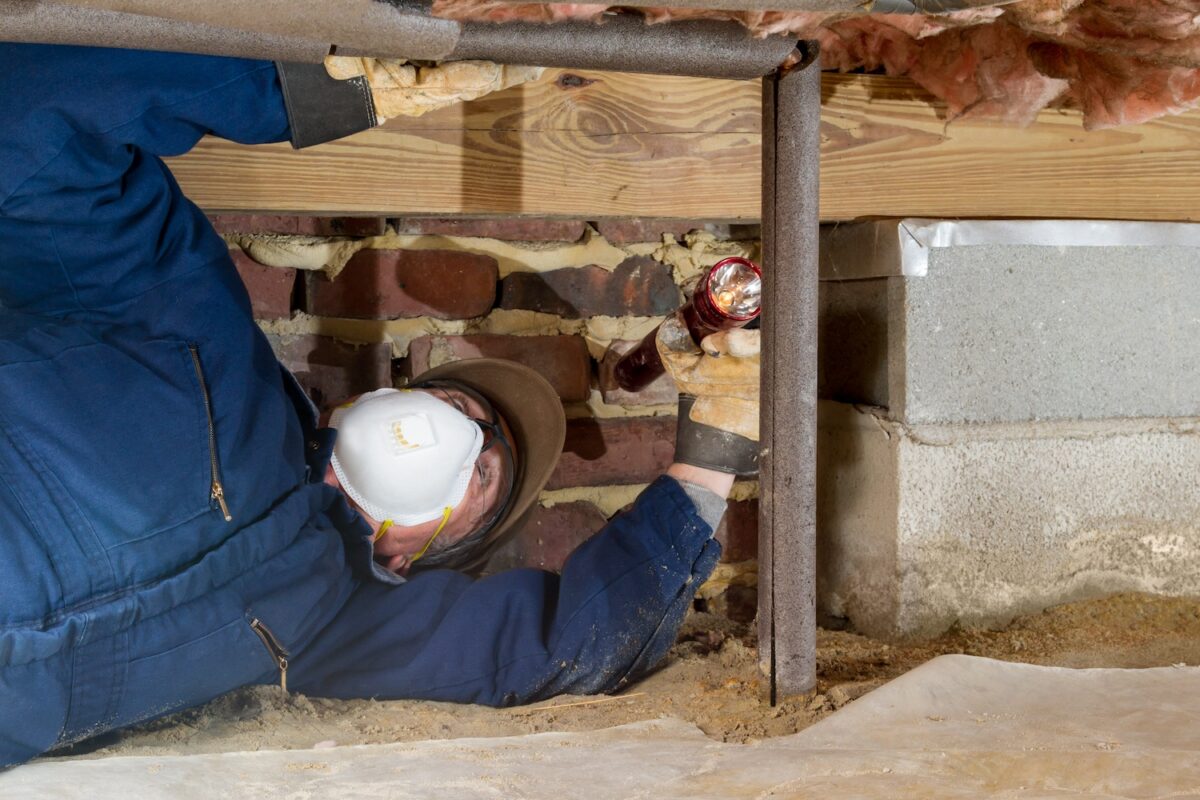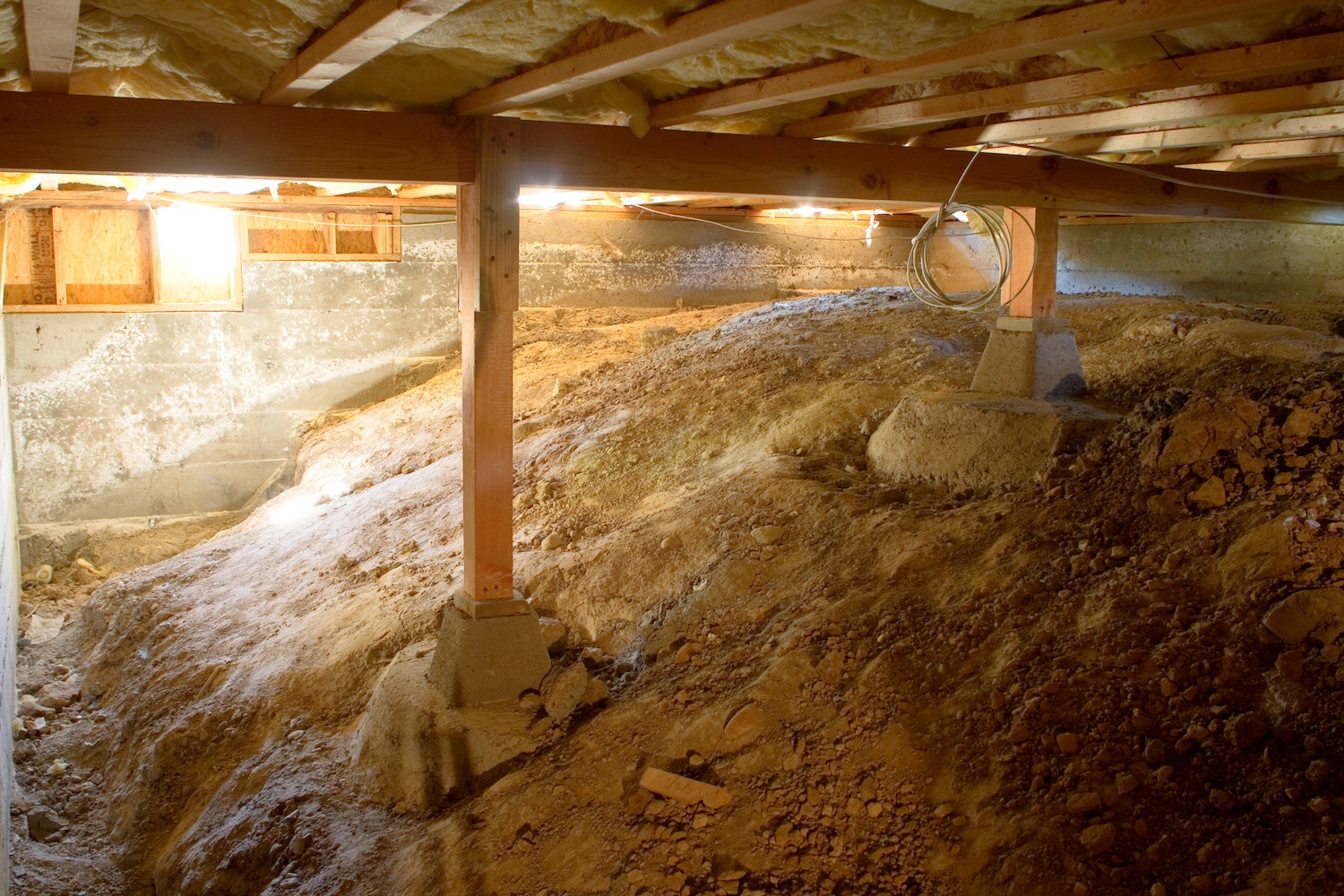Keeping Your Crawlspace Safe and Dry

Here’s a little secret about houses most people don’t know: the main purpose of a house’s structure is to keep water in its place—mostly out, but sometimes in—pipes, faucets, toilet bowls, and the right amount in the air. Too much water, even just in the form of moisture, can be devastating to the house and those inside it.
That is particularly true of crawl spaces.
When moisture gets into the crawl space, it can cause a host of problems both to the wood in the house and its occupants. Moisture comes in the form of excess humidity, rainwater, groundwater evaporation, and even sweating ductwork. Most moisture starts beneath the house and works its way up.

What is the proper humidity for inside a house? Between 50% and 60% humidity is healthy for humans without damaging wood, metal, or concrete or inviting creatures like termites and cockroaches. Above about 65% can cause problems. Here are a few:
- Damage to wood floors. Cupping and buckling floors can be caused by excess moisture.
- Mildew and mold in the home. It can cause illness to occupants in the home and is easily detected by a musty smell.
- Falling insulation in the crawl space. When insulation gets wet, it loses its grip on walls and joists.
- Sudden allergy symptoms in the family. When your house is ill, it makes the people (and pets!) ill too.
How can you prevent moisture from gathering in your crawl space? First, get underneath there and do an inspection.
Not your cup of tea? Hire professionals to inspect the crawl space. Our team will identify cracks and holes that serve as gateways for critters like mice, snakes, and spiders, and our favorite here in Aiken is palmetto bugs. These creatures can tear insulation, damage wood and chew through wires.
Our experts will also search for water dripping from plumbing and HVAC ducts. Whatever they find can be remediated by sealing cracks and holes and insulating pipes and ducts.
We can offer permanent remediation options that can prevent these problems from recurring. They include:
Crawl space encapsulation – sealing off the crawlspace with a vapor barrier, usually made of polyurethane sheeting and spread tightly across the ground and up the walls, prevents moisture from infiltrating beneath the house.
Crawl space dehumidification – dehumidifiers remove excess moisture from ground evaporation, maintaining a healthy humidity level beneath the home.
Crawl space insulation – using rigid polystyrene foam panels creates a tight seal that keeps humid outside air out. This has the added benefit of increasing the energy efficiency of the HVAC system.
Further action may be needed for crawl spaces that flood regularly. This might include installing a sump pump, which pumps out water when it accumulates, or digging French drains—ditches in the concrete that capture water and direct it into the sewer.
There are two more items to consider. First, take a look at your gutters and downspouts. Are they directing water away from the house? If not, you can quickly remedy that.
Finally, schedule regular crawl space inspections and maintenance. The sooner you catch problems and repair them, the fewer health problems for your house, your wallet and your family.
At Holley Heating & Air Conditioning, your comfort is our #1 concern. Air conditioning system maintenance is the key to keeping your system up and running efficiently and cost-effectively. You can trust our experienced team to keep your system running smoothly in all seasons. Call us to schedule an appointment today.
- Sudden allergy symptoms in the family. When your house is ill, it makes the people (and pets!) ill too.




